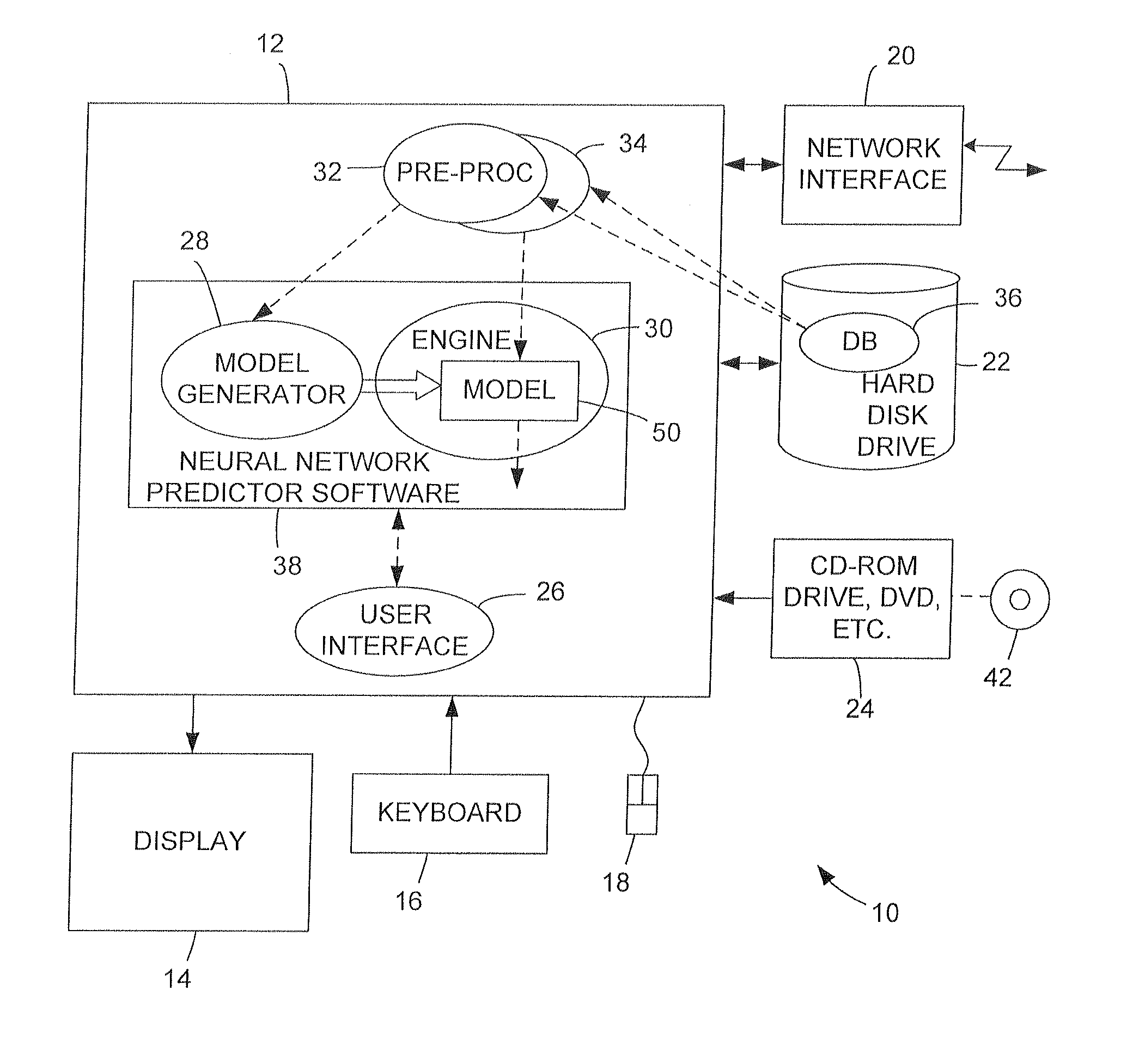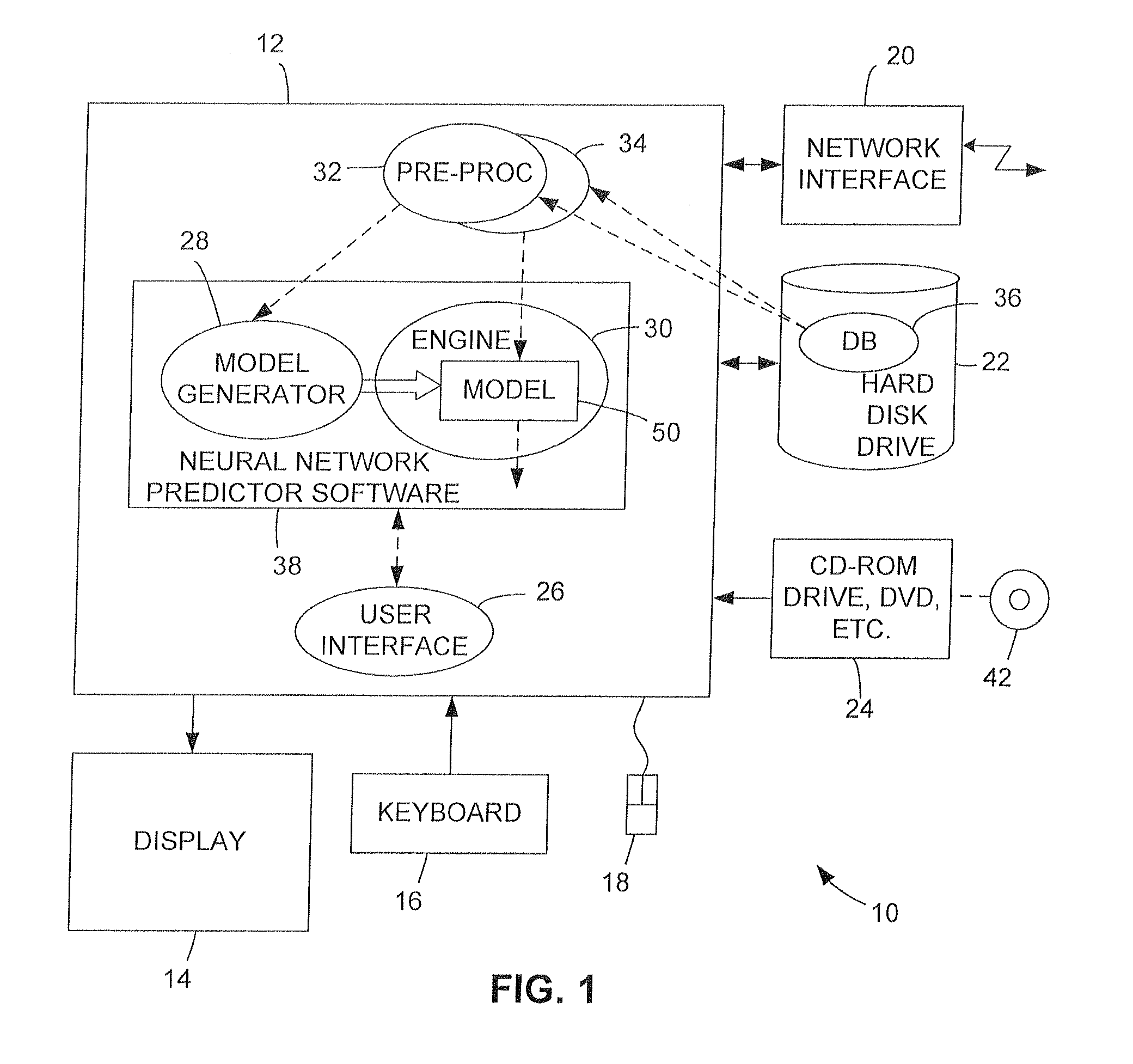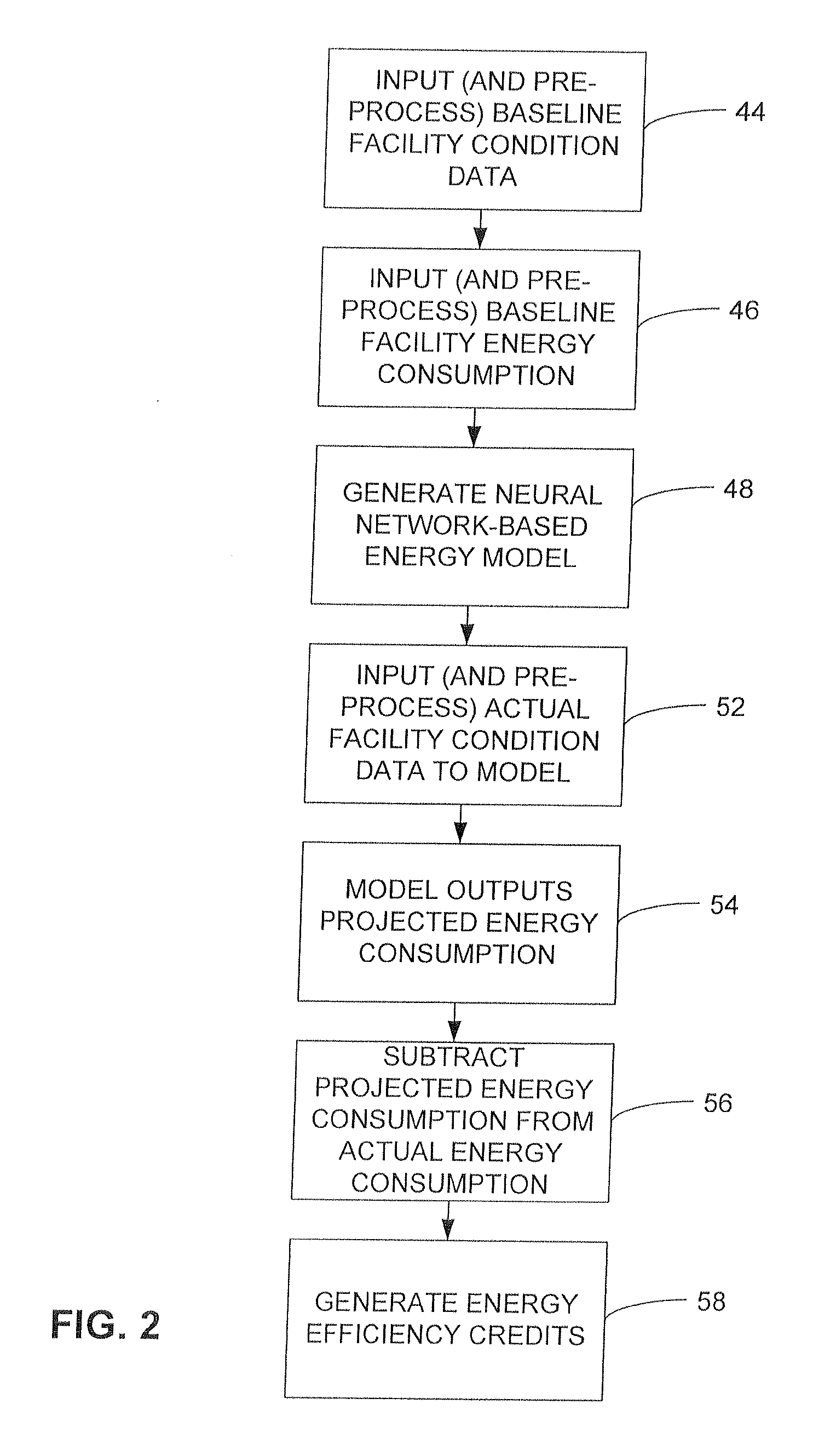Method and apparatus for determining energy savings by using a baseline energy use model that incorporates an artificial intelligence algorithm
a baseline energy use model and artificial intelligence algorithm technology, applied in the field of methods and apparatus, can solve the problems of large on-site evaluation of building design parameters, large model error, and inability to accurately generate eecs, and achieve the effects of saving energy, improving training, and accurate generation of eecs
- Summary
- Abstract
- Description
- Claims
- Application Information
AI Technical Summary
Benefits of technology
Problems solved by technology
Method used
Image
Examples
Embodiment Construction
[0042]As illustrated in FIG. 1, in an exemplary embodiment of the present invention, an exemplary computing system 10 can be used to determine energy cost savings in an energy-consuming facility. The term “facility” as used herein refers to any group of one or more commercial or residential buildings or other operations that consume energy (for example, for heating and cooling the space). Thus, the term “facility” is intended to include an individual building, a group of buildings, an individual energy-consuming system, or a group of energy-consuming systems. The invention can be used by, for example, owners or managers of the facility and related entities to assess whether energy-conserving or efficiency-enhancing measures that have been implemented are resulting in energy savings. Although in the exemplary embodiment of the invention, the system, method and computer program product are described in relation to a standalone computing system 10 for purposes of illustration, in alter...
PUM
 Login to View More
Login to View More Abstract
Description
Claims
Application Information
 Login to View More
Login to View More - R&D
- Intellectual Property
- Life Sciences
- Materials
- Tech Scout
- Unparalleled Data Quality
- Higher Quality Content
- 60% Fewer Hallucinations
Browse by: Latest US Patents, China's latest patents, Technical Efficacy Thesaurus, Application Domain, Technology Topic, Popular Technical Reports.
© 2025 PatSnap. All rights reserved.Legal|Privacy policy|Modern Slavery Act Transparency Statement|Sitemap|About US| Contact US: help@patsnap.com



